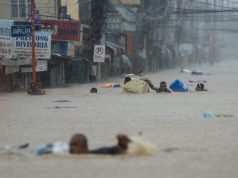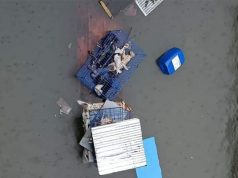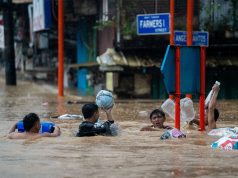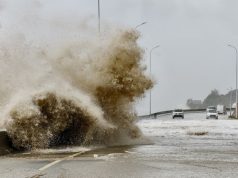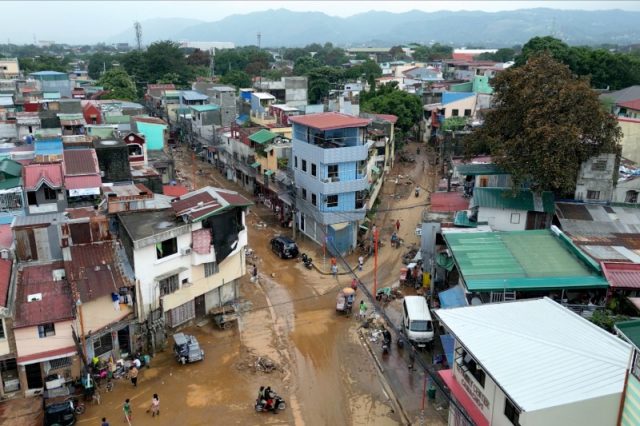
The flooding in Metro Manila last week brought up not only garbage woes but also glaring issues on flood control.
Some Filipinos, who bear the brunt of frequent flooding, took to social media to express wider calls for better solutions in the wake of Typhoon Carina and the southwest monsoon rains.
Long-term solutions
Writer Jerry Gracio remembered past typhoons when Filipinos fated the same tragedy that cost properties and lives.
The mitigations that government agencies give such as road work and relief goods are not long-term solutions, he said.
Being desensitized to the problem, added Gracio, creates a cycle.
Na-Ondoy na tayo, na-Yolanda, taon-taong binabagyo, pero hindi tayo natututo. Ang solusyon natin lagi sa baha: itaas ang kalsada, mamigay ng relief, ni hindi mitigation kundi palliatives; hindi long-term na solusyon sa mga problema dahil nasanay na tayo.
— Jerry B. Grácio (@JerryGracio) July 24, 2024
Some Filipinos are not blind to this cycle.
On Facebook, a viral meme comically illustrates what it calls a “Pinoy life cycle”.
What other social media users suggest include early management instead of reactive monitoring and response.
i think “flood control projects” should be more focused on prevention and early management instead of monitoring and response 😣 ilang taon na kayo nagmo-monitor ng baha pero ang nagbago lang ay dumami yung mga lugar na binabaha 🥲
— chichi ₍ᐢ. ̫.ᐢ₎ (@chichilittle) July 24, 2024
Flood control projects
“Flood control” became a buzzword not only due to “Carina”, but incidentally because right before the typhoon, President Ferdinand Marcos Jr. stated in his State of the Nation Address that the government finished 5,500 flood control projects.
This left weathered Filipinos grappling to find an answer to the question: where?
Clamor echoed on various corners of social media.
Marcos SONA 2024: “Mahigit 5,500 flood control projects ang natapos na.”
Pilipino: Lubog na naman sa baha. pic.twitter.com/5Mzr9J9VuM
— Renato Reyes, Jr. (@natoreyes) July 24, 2024
On X (formerly Twitter), a paradox wrote itself when a banner of political gesture came flailing into the deluge it promised to eradicate.
— Reggie S Gazmen (@gazmen_reggie) July 26, 2024
Garbage and climate change
Marcos himself visited affected cities Malabon, Navotas, Valenzuela.
When he faced the media, the president blamed climate change and trash for the flooding. He also mentioned a ship mishap that damaged a navigation gate in Navotas.
People were quick to react to this, saying that the cause is not that simple.
In a post on X, Rep. Raoul Manuel (Kabataan Partylist) said ordinary citizens who are the victims of the flood should not be blamed.
He added that climate change is not a byproduct of consumers’ footprint alone but of big production companies.
Di ganito kasimple ang dahilan ng malalang baha sa NCR, kaya di dapat sinisisi ang mga ordinaryong kababayan na mismong biktima ng mga baha. Di rin consumption ng masa ang pangunahing nagdulot ng climate change, kundi ang mapanirang sistema ng produksyon ng malalaking kumpanya. pic.twitter.com/R4CXRpexfA
— Raoul Manuel #Kabataan (@iamRaoulManuel) July 25, 2024
Another activist on X clocked Marcos on his statement.
The severe flood, she said, is also caused by seabed quarrying, land conversion, and reclamation projects like that of Manila Bay and Bacoor, Cavite.
“Stop blaming the Filipinos for your greed, incompetence and negligence,” she wrote.
Quarrying + Land use conversion + Reclamation projects = Matinding baha
Stop blaming the Filipinos for your greed, incompetence and negligence.#NasaanAngPangulo? Ayun, nang g-gaslight lang, walang ginagawa. Wala kang kwentang pangulo—yung “Bagong Pilipinas” mo lubog. https://t.co/ObI4iYL6DR
— Alicia Lucena (@lishalucena) July 25, 2024
Lawmakers also examined the aftermath of the typhoon.
Senate president Francis “Chiz” Escudero questioned the effectivity of these projects and the use of the P255 billion national budget allocated to the Department of Public Works and Highways (DPWH) this year.
Sen. Nancy Binay shared the same sentiment and said that “the people deserve accountability”.
Following this, the Senate public works committee chaired by Sen. Ramon “Bong” Revilla Jr. was tasked to look into the discrepancy between the substantial budget and subpar results.
Flood control master plan
Marcos explained that the country needs to adapt to the rising sea level due to climate change, and that building higher dikes is not enough.
Thus, a master plan to cope with La Niña is needed, he said.
He was talking about expanding an already-existing P350-billion long-term flood management plan, crafted by former DPWH secretary Rogelio Singson and approved by former president Benigno “Noynoy” Aquino III in 2012.
However, a decade later, according to DPWH, only 30% of the plan which supposedly concludes 2035 is executed.
“I think ang tantsa ko rito is under about 30% because there are several components po nito, maraming components nitong master plan na ito. Sa amin sa DPWH, is actually ‘yung sa pagdaloy ng floodwater along Pasig River. There are other components like environmental, social, and other issues,” DPWH Secretary Manuel Bonoan said.





